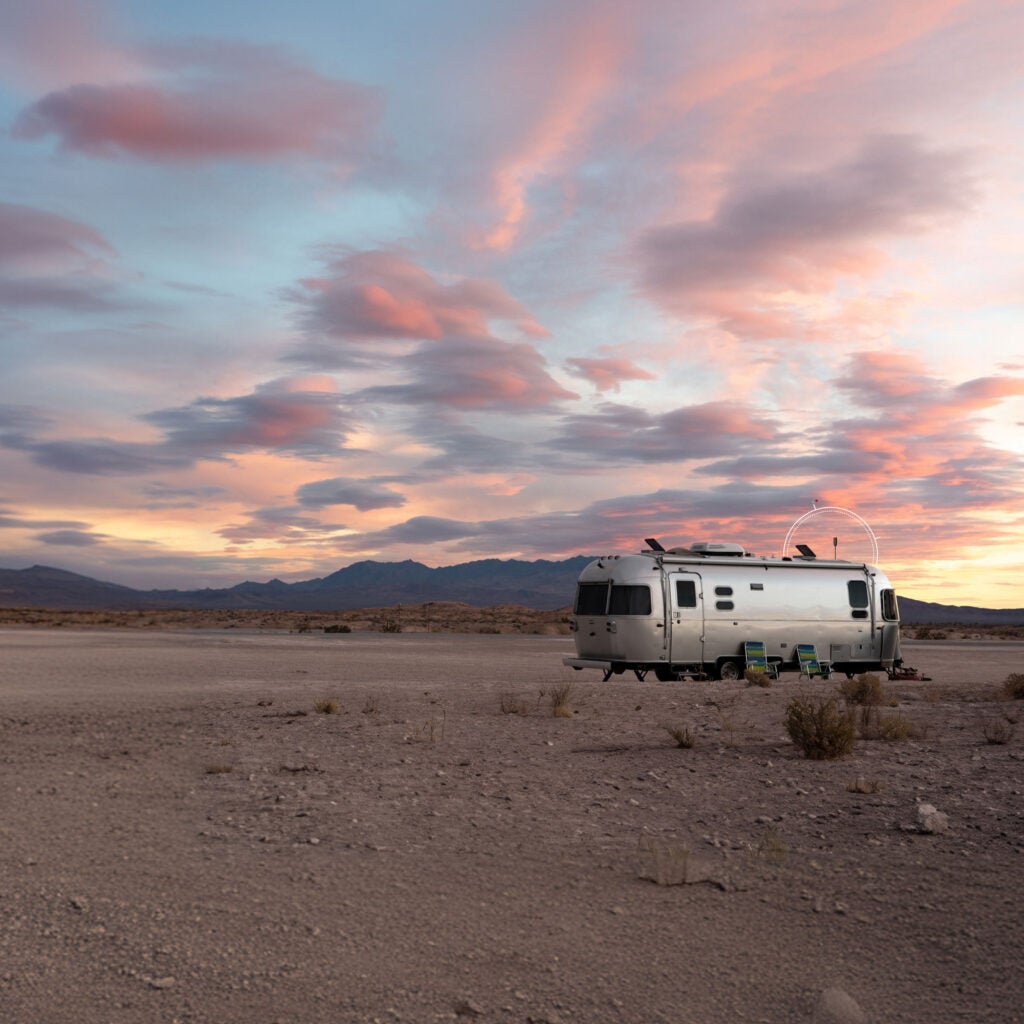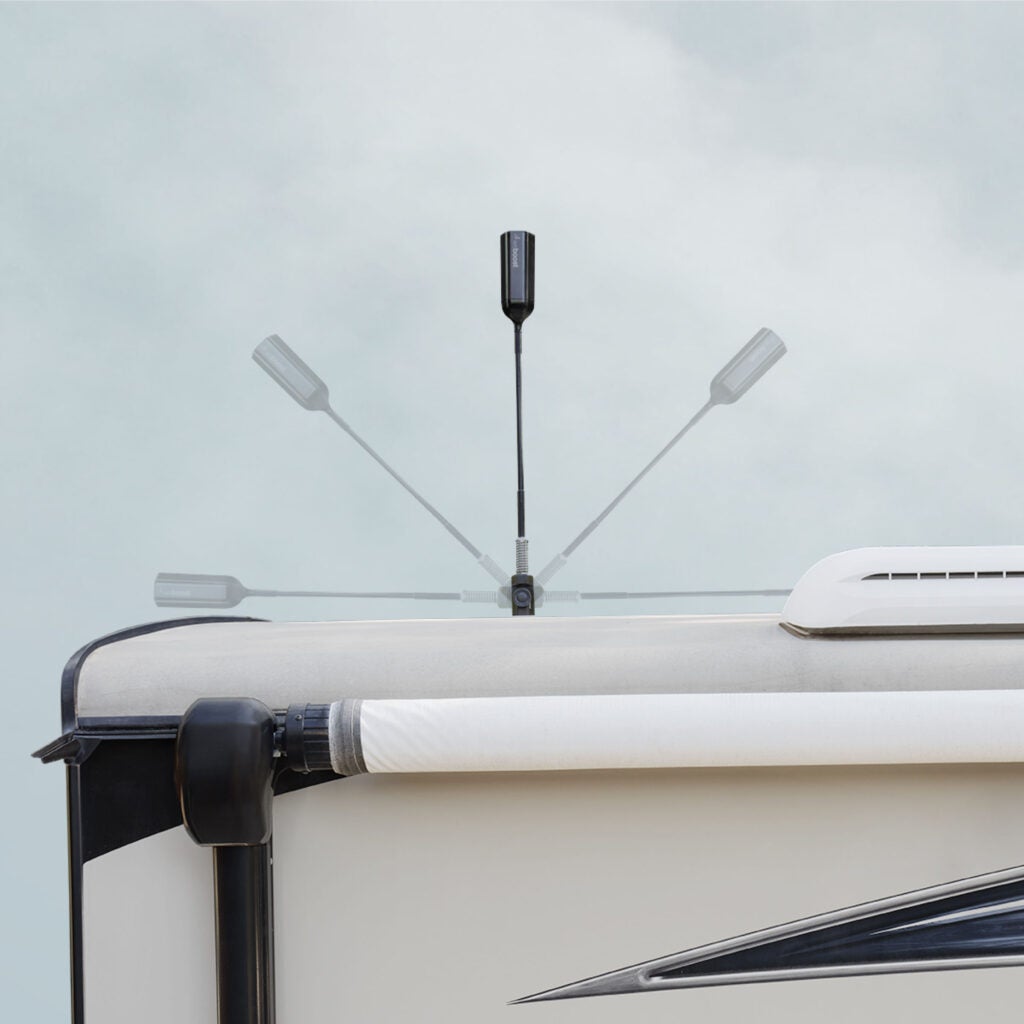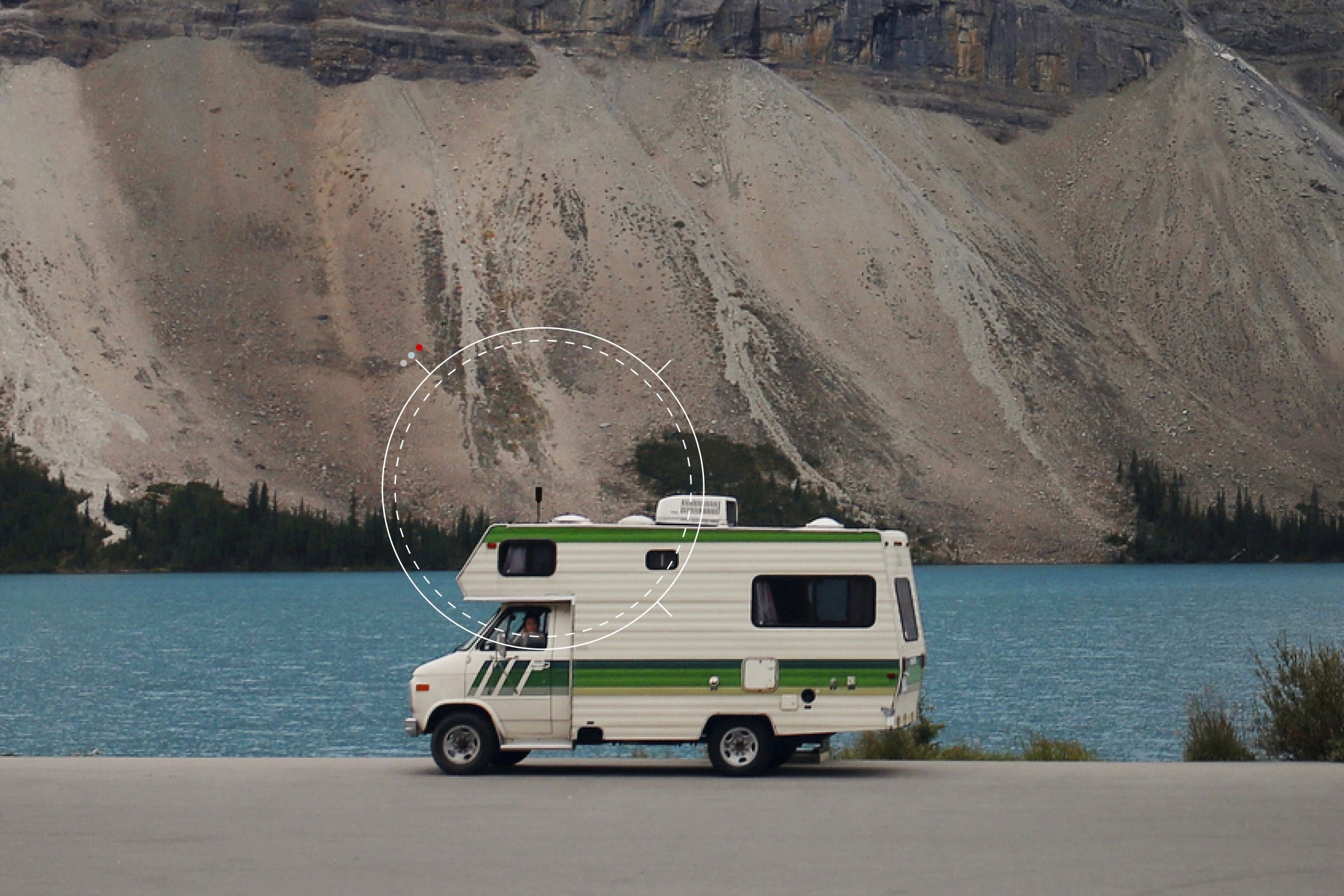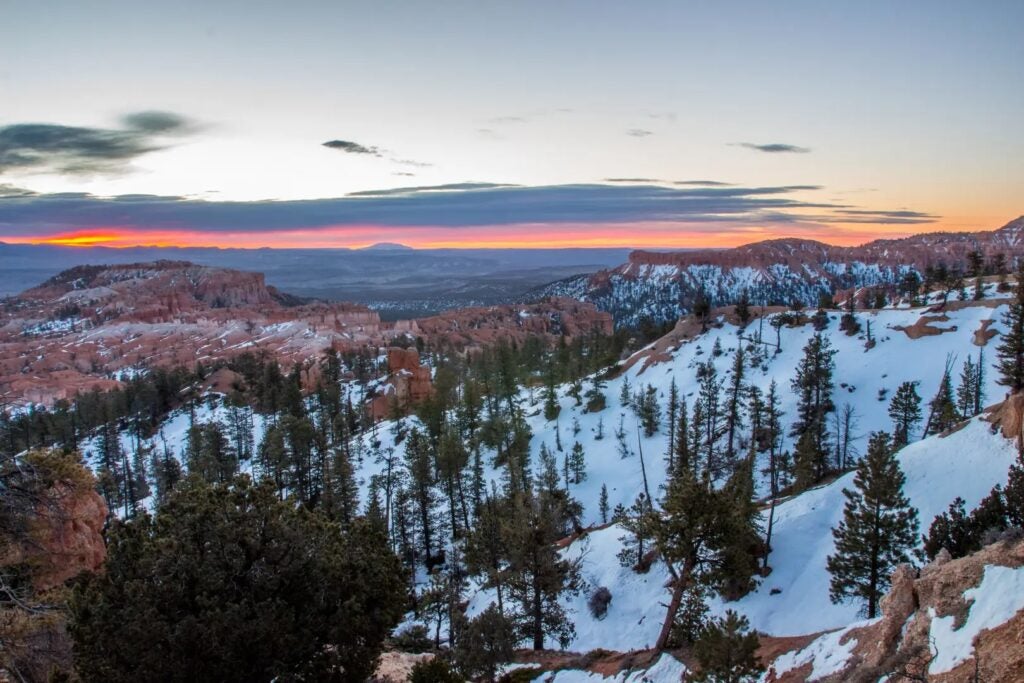The allure of RV travel lies in the freedom to venture off-the-beaten-path. But in many cases, heading into remote areas means sacrificing reliable cell phone reception. This isn’t just inconvenient. It can be unsafe as well. We’ve all struggled with spotty GPS signal while trying to find a remote campground in the dark, or boondocked near sketchy people and wished we had an open line to family.
But unplugging from the rat race doesn’t have to mean unplugging from friends, family, online resources, and emergency services, too. If you’ve ever driven your rig out to a secluded campsite, watching the 5G indicator on your smartphone dwindle to 4G LTE, then to 3G, and finally down to the dreaded 1x…
Then weBoost’s Drive Reach RV II is for you.
What is it?
The Drive Reach RV II is a cellphone signal booster. It catches and amplifies the coverage area of nearby cell towers, effectively tripling their effective radius. This eliminates dead zones between towers and makes your cell phone signal up to 32X stronger, dramatically improving data speeds and reducing dropped calls by as much as 90%.
The Drive Reach RV II also boosts multiple devices simultaneously, regardless of carrier. That means better voice and data performance not just for you, but for everyone in your RV.

Why boost?
There are a variety of options for staying connected while RVing—from satellite service to piggybacking on existing WiFi—but boosting your cell signal makes the most sense. It maximizes the value of your existing plan, without additional subscriptions or unexpected price hikes. No more relying on shared campground Wi-Fi during peak times. No more dealing with satellite service throttling in crowded areas.
You’re already paying for cell phone service. Why not make it work as well as possible?
There are other benefits, too. Better signal also means better battery life. When your phone is incessantly grasping for spotty coverage, its battery is paying a heavy price. (Anyone who’s ever forgotten to enable “Airplane Mode” while in the backcountry or on a plane can attest to this.)
So how does it work?
The Drive Reach RV II has three main components.
- An exterior 360° hex omni antenna captures any available cell signal in your vicinity.
- The captured signal is amplified to the maximum allowable level regulated by the FCC.
- This boosted signal is broadcast inside your RV via the interior antenna.

All weBoost products are designed, built, tested, shipped and supported from the USA. No corner-cutting from foreign factories. The system features premium, long-lasting cabling and a weatherproof entry port, is built to military standards (MIL-STD-810G) for shock and vibration resistance, and both the exterior and interior antennas are IP66 compliant for dust and water protection. It can also be powered by AC/DC wall power or 12V hardwire.
With a 30-day money-back guarantee and a two-year warranty, you have plenty of time to put the Drive Reach RV II through its paces, stress-free.
A mobile app assists in simple DIY installation and testing. Once the system is installed and the antenna is up, the Drive Reach II is 100% hands-off. No engineering degree needed.
You’re just using your cell phone like normal, only with dramatically stronger signal in more campgrounds and boondocking locations.
Peace of Mind, Wherever you Roam
As RVers, we’re trying to unplug from the world, not our family and friends. The untrammeled beauty of starry skies and wide open spaces doesn’t have to come with a price of total isolation.
If you’re tired of weak cell phone signals limiting your adventures, invest in the weBoost Drive Reach RV II, and use code DYRTHOOKUP for 10% off.
The Dyrt is the only camping app with all of the public and private campgrounds, RV parks, and free camping locations in the United States. Download now for iOS and Android.Popular Articles:
Articles on The Dyrt Magazine may contain links to affiliate websites. The Dyrt receives an affiliate commission for any purchases made by using such links at no additional cost to you the consumer.



